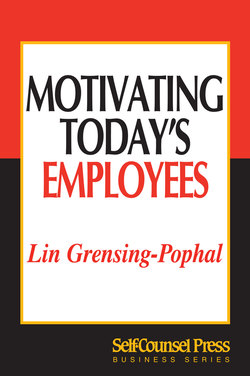Читать книгу Motivating Today's Employees - Lin Grensing-Pophal - Страница 21
На сайте Литреса книга снята с продажи.
Fallacy #8: Nobody’s Irreplaceable
ОглавлениеHave you ever, after a valued employee gives his or her notice, said, “Oh well. Nobody’s irreplaceable”? In some respects you may be right. Certainly if you try long enough, pay high enough, or are willing to settle for an employee who is merely good enough, you can replace anybody. You can fill the position, but can you fill the void?
The costs of replacing a staff member can be substantial, especially if you’re replacing employees at top levels of the organization or employees who have very specialized skills.
A 1998 study by William M. Mercer Inc. indicated that 45 percent of the 206 medium-to-large U.S. companies polled reported that turnover cost them more than $10,000 per replaced employee. One-fifth of the respondents indicated that the cost was as high as $30,000 per employee.
Consider that the cost of turnover doesn’t just include tangible costs of recruitment.
Some of the actual costs you’ll have are the costs of advertising the new position, possibly the cost of a temporary employee to fill in until a new hire can be added to the staff, the cost of a recruitment agency, and perhaps the cost of travel and lodging for your candidates. But these costs do not represent the actual or only costs you’ll experience.
Your actual costs go beyond the costs of recruitment and selection. They go beyond the costs of orientation and training. They include lost opportunity costs, and those costs can be difficult to measure.
Turnover costs also include a number of other intangible costs. For instance, consider the following:
• The prior investment made in the training and development provided to the employee while he or she was with your organization
• If the employee worked in a cost center, the cost of revenue lost while the position is being filled and while the new employee is getting acquainted with the business
• The cost of lost customers or clients who may follow the former employee to his or her new position
• The drop in productivity for other employees as they pick up the slack for the departing employee and the new hire until he or she becomes fully functional
• The cost of the supervisor’s or manager’s time in training and developing the new employee (an investment that could potentially be lost again if the new hire decides to leave your firm)
Consider, also, more global costs, such as the potential damage to your company’s reputation if turnover becomes endemic and the classified ad section of the local newspaper continually carries ads for replacement positions. Think of the effect upon customer relations if customers must continually deal with new employees with whom they have not established relationships and who have not yet attained the level of expertise necessary to provide exceptional service.
If you’ve ever lost a valued employee and struggled to find and retrain a replacement, you know that some people truly are irreplaceable!
